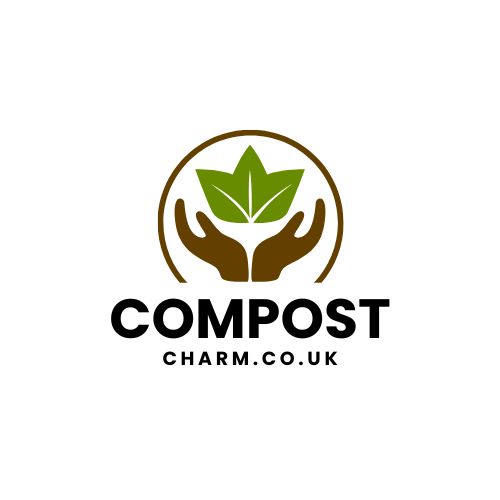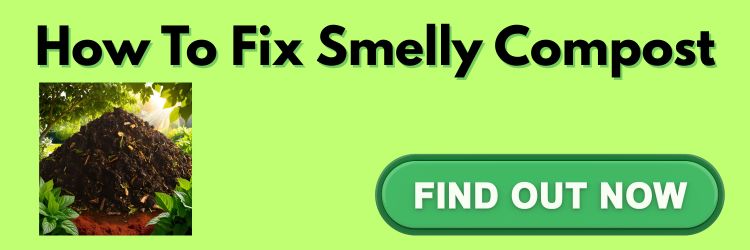Can I put cereal in compost? Yes, in small amounts. Learn what types work, what to skip, and how to mix browns and greens for a clean, odor-free bin.
Composting is a great way to cut down on waste and make soil full of nutrients for your garden.
If you’re thinking about composting breakfast cereal, the answer is yes!
Turning whole grains and other organic stuff into compost helps the planet and your garden.
It reduces landfill waste and makes a natural fertilizer for your plants.
As you start composting, you’ll see how kitchen scraps become something valuable.
This guide will show you how to compost well and get the most out of it.
Key Takeaways
- Composting reduces waste and creates nutrient-rich soil.
- Breakfast cereal and whole grains can be composted.
- Composting helps reduce environmental impact.
- Composting creates a natural fertilizer for gardens.
- Sustainable gardening practices can be achieved through composting.
The Basics of Composting Food Waste
Composting food waste is key to making it useful. It needs a mix of green and brown materials.
Food waste is green and helps create a good compost pile.
What Makes Good Compost Material
Good compost has both green and brown materials. Green stuff, like food scraps and grass clippings, is rich in nitrogen.
Brown stuff, like dried leaves and newspaper, is full of carbon.
Green vs. Brown Materials in Composting
It’s important to balance green and brown materials. Green materials add nitrogen for microorganisms.
Brown materials give carbon for energy. Aim for 2/3 brown and 1/3 green.
The Role of Food Waste in Healthy Compost
Food waste is key in composting, adding nitrogen and speeding up breakdown. But, mix it with brown materials to avoid smells and pests.
The Importance of Balanced Compost
A balanced compost pile is essential for efficient breakdown. It needs the right carbon-to-nitrogen ratio, moisture, and aeration.
Carbon-to-Nitrogen Ratios Explained
The carbon-to-nitrogen (C:N) ratio is critical. Aim for 25:1 to 30:1. This means 25-30 parts carbon for every 1 part nitrogen.
Moisture and Aeration Requirements
Moisture and aeration are also key. Keep the compost moist, like a damp sponge. Also, aerate it regularly for oxygen.
By following these basics, you can make a compost ecosystem. It turns food waste into a valuable resource for your garden.

Understanding Cereal Composition
To compost cereal well, knowing what it’s made of is key. Cereals have grains, sugars, and additives.
These affect how they decompose in compost.
Common Ingredients in Modern Cereals
Today’s cereals mix grains, sugars, and additives for taste and nutrition. Grains are the main part.
Sugars and flavorings make them taste better.
Grains, Sugars, and Additives
Cereals have grains like oats, corn, or wheat. They also have sugars and preservatives. Knowing this helps in composting them right.
Organic vs. Conventional Cereal Ingredients
Organic cereals don’t use synthetic pesticides or fertilizers. This makes them better for composting because they have fewer chemicals.
Nutritional Components and Their Decomposition
Cereals are full of carbohydrates, which give energy. It’s important to know how these nutrients break down when composting.
How Carbohydrates Break Down in Compost
Carbohydrates in cereals turn into simpler things. This creates carbon-rich material for compost.
It helps microbes grow, making the compost better.
Effects of Fortified Vitamins and Minerals
Many cereals have extra vitamins and minerals. These can help plants grow when added to soil. But, too much can be bad.

Cereal in Compost: The Definitive Answer
Cereal is a key part of our breakfasts and can also help with composting. It’s important to know how cereal works in composting for sustainable waste management.
The type of cereal matters a lot for composting. Plain cereals usually break down better than sugary or processed ones.
Plain Cereals vs. Sugary Varieties
Plain cereals, like those made from whole grains, are easier to compost. They have less sugar and fewer additives, which means fewer pests.
Sugary cereals, on the other hand, can make composting harder.
Their sugar attracts pests and can cause bad smells, upsetting your compost pile.
Decomposition Rates of Different Cereal Types
How fast cereal decomposes depends on its ingredients.
Oat-based cereals, for example, decompose faster than those made from corn or rice because of their fiber.

Environmental Impact Considerations
Composting cereal has big environmental benefits. It reduces landfill waste and makes a soil amendment for sustainable gardening.
Knowing how cereal works in compost helps us manage waste better.
It’s a step towards a more sustainable future.
Benefits of Adding Cereal to Your Compost Pile
Adding cereal to your compost pile can make your compost better. It adds nutrients and improves soil structure. This is great for your garden.
Nutrient Contribution to Finished Compost
Cereal brings important nutrients to your compost. These include minerals and trace elements that help plants grow.
Healthy soil and strong plants depend on these nutrients.
Minerals and Trace Elements from Cereals
Cereals are packed with minerals like iron, zinc, and potassium. These minerals, along with trace elements, make the compost healthier.
How Plants Utilize These Nutrients
Plants use cereal nutrients in many ways. Iron helps with photosynthesis, and potassium boosts plant health and fights disease.
Carbon-to-Nitrogen Balance Considerations
Keeping the right carbon-to-nitrogen balance is key in composting. Cereals help with this by adding carbon.
Cereals as a Carbon Source
Cereals are full of carbon, making them great for compost piles. They help balance out nitrogen-rich materials, leading to healthy decomposition.
Balancing with Nitrogen-Rich Materials
To get the perfect balance, mix cereals with nitrogen-rich stuff like kitchen scraps or manure.
This mix ensures your compost decomposes well and is of high quality.
Knowing how cereal benefits compost and how to mix it right can make your compost rich.
This will greatly help your garden.

Potential Concerns When Composting Cereal
Before adding cereal to your compost, think about the possible issues. Composting cereal can be good, but it has its downsides.
High sugar content in cereals can draw pests, and preservatives can slow down decomposition.
Sugar Content and Pest Attraction
Cereals, mainly sweet ones, can draw pests to your compost. This is a big worry as it might bring unwanted visitors to your garden.
Rodents, Insects, and Other Unwanted Visitors
Pests like rodents and insects are drawn to cereal’s sugar. These pests can be a problem, spreading disease or harming your garden.
Strategies to Minimize Pest Problems
To fight pests, you can take a few steps:
- Bury cereal deep in the compost pile to make it less appealing to pests.
- Mix cereal with other compost materials to lessen its sugar content.
- Start with cereals that have less sugar.
Preservatives and Their Impact on Decomposition
Some cereals have preservatives to last longer. These can slow down composting.
Common Cereal Preservatives to Watch For
Look out for BHT and BHA in cereals. They’re safe to eat but might slow down compost microbes.
Do Preservatives Slow Down the Composting Process?
Studies show some preservatives can slow down decomposition. But, it depends on the preservative and your compost’s conditions.
To keep your compost healthy, know these issues and how to fix them. This way, your composting will help your garden grow well.
How to Properly Compost Different Types of Cereal
To compost cereal well, you need to know what kind you’re working with. Each cereal breaks down differently, affecting your compost.
Oat-Based Cereals
Oat-based cereals are easy to compost because they’re full of organic matter. They decompose fast, adding nutrients to your compost.
Granola and Muesli Considerations
Granola and muesli are denser and may take longer to break down. Chop or crush them first to speed up decomposition.
Hot Cereal Leftovers
Hot oat cereals, like oatmeal, are great for compost. They’re full of nutrients and attract good microorganisms to your compost.
Corn and Rice Cereals
Corn and rice cereals compost differently than oat-based ones. They need more careful handling.
Puffed Cereals Decomposition
Puffed cereals decompose fast but don’t add as much nutrition as unprocessed cereals.
Flaked Varieties and Their Breakdown
Flaked corn and rice cereals compost easily. They decompose quickly and add carbon to your compost.

Wheat and Bran Cereals
Wheat and bran cereals are full of fiber and nutrients. They’re great for your compost.
High-Fiber Cereal Benefits in Compost
High-fiber cereals like bran are super beneficial. They improve compost structure and provide nutrients.
Fortified Cereal Considerations
Fortified cereals are nutritious for us but might affect decomposition. Watch how they break down and adjust your composting as needed.
| Cereal Type | Composting Characteristics | Nutritional Value |
|---|---|---|
| Oat-Based | Breaks down quickly, high organic matter | Rich in nutrients |
| Corn and Rice | May require more management, varies by processing | Contributes to carbon content |
| Wheat and Bran | High in fiber, decomposes well | High nutritional value improves compost structure |
Best Practices for Composting Cereal Products
Composting cereal products right involves preparation, mixing, and layering. It’s key to know how to prepare and mix cereal well.
This makes composting more effective.
Preparation Methods Before Adding to Compost
Getting cereal ready before adding it to compost is important. Two good ways are crushing and soaking.
Crushing and Soaking Techniques
Crushing cereal makes it easier for microorganisms to break down. Soaking cereal softens it, helping decomposers work on it better.
Removing Packaging Contaminants
Take out any non-compostable packaging like plastic or wax. These can harm your compost and plants.
Optimal Ratios and Layering Techniques
It’s important to mix carbon-rich and nitrogen-rich materials right. Cereal is mostly carbohydrates, making it carbon-rich.
Mixing Cereal with Other Compostables
Mix cereal with materials like vegetable scraps or grass clippings. This helps get the right mix of carbon and nitrogen.
Aim for 2/3 “brown” materials and 1/3 “green” ones.
Accelerating Decomposition of Cereal Products
To speed up cereal decomposition, mix it well with other materials. Keep your compost pile moist and aerated.
| Compost Material | Carbon/Nitrogen Ratio | Decomposition Rate |
|---|---|---|
| Cereal | High Carbon | Moderate |
| Vegetable Scraps | High Nitrogen | Fast |
| Dried Leaves | High Carbon | Slow |
“Composting is a natural process that turns organic materials into a valuable resource for gardening.”
As following best practices for composting cereal is good for your garden. It reduces waste and makes your soil better.

Beyond Breakfast: Other Grain Products in Your Compost
Composting isn’t just for cereal. Pasta, bread, and baking leftovers can also turn into nutrient-rich soil.
Exploring sustainable waste management, you’ll see many grain-based foods can be composted.
Pasta and Bread Products
Pasta and bread are easy to compost. Cooked or uncooked, they add valuable nutrients to your compost pile.
Dealing with Cooked vs. Uncooked Grains
Cooked grains like pasta or rice can be composted. But, they might attract pests if not balanced with other compost materials.
Uncooked grains, on the other hand, are less likely to attract pests but need to be mixed well with other compost.
Preventing Clumping and Matting
To avoid clumping, mix pasta and bread well with other compost materials like leaves or straw.
This keeps your compost pile aerated and decomposes evenly.
Flour and Baking Leftovers
Flour and dough from baking can also be composted. They are rich in carbon and help balance your compost’s nitrogen levels.
Raw Flour and Dough Considerations
Raw flour can clump when composted. Mixing it with other materials or moistening it slightly helps it decompose better.
Composting Failed Baking Projects
Don’t discard failed baking projects. Add them to your compost. They’ll break down and provide nutrients for your garden.
| Grain Product | Composting Considerations | Nutrient Contribution |
|---|---|---|
| Pasta | Mix well to prevent clumping; cooked pasta may attract pests | Carbon, nitrogen |
| Bread | Can be moldy; mix with dry materials | Carbon, nitrogen |
| Flour | Can clump; mix with moist materials or moisten slightly | Carbon |
| Baking Leftovers | Can be rich in sugar; balance with other materials | Carbon, nitrogen |
Troubleshooting Common Issues When Composting Cereal
Fixing cereal compost problems is simpler than you might think. It’s all about knowing the basics.
Issues like mold, bad smells, and pests can pop up. Learning how to solve these problems is key to a healthy compost pile.
Dealing with Mold and Odors
Mold and bad smells are common when composting cereal. Some mold is okay, but too much or strong smells mean there’s a problem.
Is Mold on Cereal Compost Normal?
Some mold is normal in compost. But too much or a lot of mold means it’s too wet or has too much cereal.
To fix this, add more brown materials like leaves or straw to balance it out.
Eliminating Unpleasant Smells
To get rid of bad smells, make sure it’s well-aired and the carbon-to-nitrogen ratio is right.
Turning the compost pile regularly also helps.
Managing Pests Attracted to Cereal Compost
Pests can be drawn to cereal compost, but there are ways to manage them.
Covered Composting Systems
Using a covered composting system keeps pests out. These systems are made to keep rodents away and work well.
Natural Deterrents for Compost Pests
Natural things like diatomaceous earth or citrus peels can keep pests away without harming the compost.
Adding a bit of finished compost also helps by introducing good microbes.
| Issue | Solution |
|---|---|
| Excessive Mold | Add more brown materials |
| Unpleasant Odors | Ensure aeration and balance C:N ratio |
| Pests | Use covered composting systems or natural deterrents |
By tackling these common problems, you can keep your compost pile healthy and productive.
Composting takes patience and observation, but with the right methods, you can turn cereal waste into something valuable.
Available from our Compost Charm Clothing Store
Conclusion:
Making Sustainable Choices with Breakfast Waste
Incorporating cereal into your compost pile is a simple way to reduce waste. It makes nutrient-rich soil for your garden.
This practice helps reduce landfill waste and supports eco-friendly gardening.
Composting breakfast waste is a big step towards a greener future. It’s part of a larger effort to live sustainably.
By doing this, you help create a healthier planet for future generations.
Starting to compost cereal and other breakfast waste is easy. It’s a small change that can make a big difference.
By following this article’s advice, you can help the environment every day.






